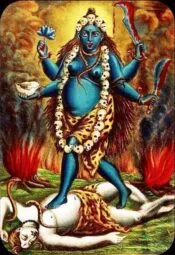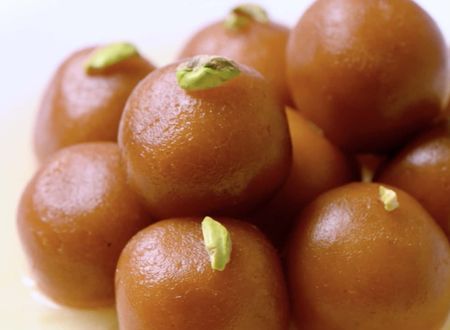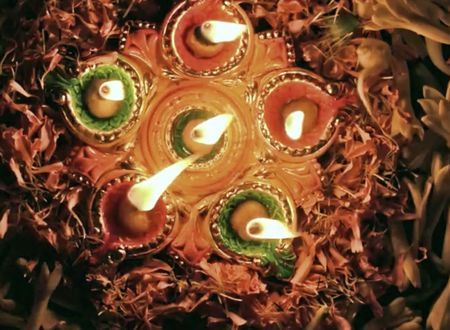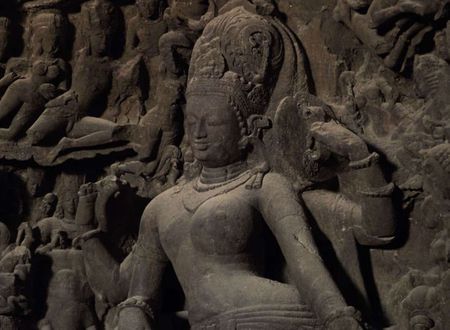The past few weeks have been filled with longing for Ma Kali. I have found solace in listening to a beautiful ode to Mother.
A couple of days ago, some of that longing was satiated when I read about the Shamshan Tara Ma form of the Mother in the book Aghora — Part 1. I had picked up this book a couple of months ago and left it almost immediately because it freaked me out. A few passages I read, gave me the impression that the writer is disrespectful to the feminine, which turned me off. However, my inner voice had been urging me to start rereading the book for the past few days, and it quickly became one of my favorite spiritual books. It’s the story of Aghori Vimalananda, and the writing is direct and abrasive in some places. It’s true to the Aghora tradition and cuts through all the conditioned niceties of society to come straight to the point. It’s like a dip in the holy Ganges on a cold winter morning. You come out shivering but more alive than you felt in a long time.
Aghori Vimalananda writes about the Divine Mother with deep intimacy and immediateness. She is not a celestial being but a living reality for him. Before diving into the esoteric meaning of Shamshan Tara Ma, let’s enjoy a few passages about the Divine Mother that resonated with me.
The Place of a Child
“Always sit in the Mother’s lap. When you get out of Her lap and try to protect yourself, She says, “All right, go on, go ruin yourself.” How can you take care of yourself? The law of Karma is too big for you to tackle alone. But if you stay in Mother’s lap and rely on her for everything, she will always provide it.”
This passage is so beautiful because it describes the essence of the Gita for me.
कर्मण्येवाधिकारस्ते मा फलेषु कदाचन।
मा कर्मफलहेतुर्भूर्मा ते सङ्गोऽस्त्वकर्मणि॥ २-४७
Sit in the Mother’s lap and focus on your actions. Rewarding you is the Mother’s job, and she knows the best reward for you. If you get down from her lap and start chasing rewards, she will let you run until you get tired and return to her again. Why waste all that time and energy?
The Longing of the Child
“How does a mother know a child is hungry? It cries. Whenever it cries in a particular way, the Mother knows it’s time for feeding. I know this from my own experience. Whenever I am disgusted with the world or tired of it, Mother taps me on the shoulder and says, “forget about that, did you know..” And she proceeds to teach me something new.”
We have to be careful in interpreting this part. He does not mean you constantly keep whining for the Mother. It means you keep that longing in your heart and firmly establish yourself in her. She becomes your only reality. Then on days when the longing overflows, she will find ways to reward you in ways that you can never expect. I have so many examples of this in my life that it feels surreal.
The Visualization of Shamshan Tara Ma
I read about this form of Mother today, and it filled felt like something that was hidden behind a curtain was revealed today. On most days, I feel slightly distant from the world. Everyone is so confident about what they want and how they plan to get there. The next big house, the car, the foreign education for kids, the big holiday, the kitchen remodel, and so many other things. When they ask about my desires, I have nothing much to share. Don’t get me wrong. I am deeply grateful to my Mother for giving me a comfortable life. However, I am even more thankful to her for giving me the detachment to enjoy it.
A couple of days ago, as I read Ma’s description and the esoteric meaning behind it, I felt she had held me in her lap and snipped away at many of these threads across lifetimes, and a feeling of contentment descended in my heart. The form which may look scary and fearsome to some became motherly and tender.

The Blue Color of Ma
Why is the sky or the sea blue? If you pick up seawater, it’s colorless, yet the sea looks blue. You can read the scientific explanation here, but it’s an optical illusion. Similarly, when we look at Ma or Krishna through our physical eyes, everything we see is an optical illusion. It’s a reminder that we are simply witnessing a form of the formless infinite divine.
The Runda Mala on Her Neck
The eight grinning heads on the necklace represent the eight nooses or emotions that cloud our minds: lust, anger, greed, delusion, envy, shame, fear, and disgust. When we are ignorant and lost in this world, our life is dominated by these emotions. The necklace signifies Ma telling us, “come to me, my child, and I will chop off these heads and free you from the tyranny of these emotions that are the key reason for your rebirth.” Most of us are so attached to these emotions that we consider them central to our existence. That’s why we run away from her or even fear her form.
The Pot-Breasted Mother
Shamshan Tara Ma is also called Ghatastani or pot-breasted because the breasts are the most significant symbol of motherhood. When a woman becomes a mother, her body automatically prepares her to start feeding the child milk and nourishing it. Her breasts signify she is Mother to the entire creation, and she feeds the universe. Mother is also called Lambodari or big-bellied because she consumes and digests all beings in the universe before bringing them back.
The Skirt of Arms
Ma also wears a skirt of freshly severed arms. The Sanskrit word for an arm is Kara, and Ma is wearing all your inauspicious and auspicious Karma accumulated over millions of births. We cover ourselves with our Karams because we are so attached to our actions and associated results. She has cut them off and is wearing them as an act of compassion. Why does she cover her navel and pubic area? She is reminding you that most karmas are performed in service of our belly and loins.
The Anklet of Cobras
Ma wears cobras as jewelry for her ankles. The cobra symbolizes our ancestors, and she is reminding us that our ancestors have taken shelter in her delicate lotus feet.
The Symbolism of Her Hands
Ma has four hands. In one, she holds a skull that symbolizes the coating of three gunas (rajas, tamas, and sattva) that coat the soul. The noose is the other hand represents her control over death. She is gifting you the boon of immortality because Yama cannot take you from her without his noose. In her third hand, she holds the scissors that cut away the cords that attach you to your body; finally, her fourth hand holds a sword that symbolizes the creation and destruction of the universe. It also means the destruction of your doubts and fears that hold you back on the spiritual path.
The Beauty of Mother’s Face
Take a few moments and gaze at Ma’s face. Forget the hands, the feet, the navel, and look deep into her eyes. Ma has lotus eyes which symbolize discrimination. Her tongue is dripping blood which represents taking your blood and purifying it by using a process called Rakta Shuddhi. This cleanses your karmas and ensures you have a higher rebirth.
Realizing Ma’s True Form
When you truly realize the true nature of Ma by sitting on her lap, you will see her for her true self, and she loses all color. In Sanskrit, the eye is considered feminine, and the eyeball is masculine. Hence, you see the duality of the universe mirrored in your eyes. When you surrender to Ma, and this duality is lifted, you can see that Ma is truly formless.
Ma Stands on Shiva
Ma always stands on Shiva, who is in deep Samadhi. She is standing on Shiva, covered by all the gunas and the karmas that represent our human form and bond us to this body. Hence the true nature of Shiva is in a state of unawareness. Sadhana and Tapas help you realize the Shiva within you, and then Shiva and Shakti dance together before she merges back into him.
The Joy of Reading Aghora
We live in a world today where everyone is all about appearances. We wear fancy clothes to appeal to other people, speak sweet words so that they like us, exaggerate our accomplishments, hide our failures, buy things we cannot afford, and project emotions that are not real. Without realizing it almost every single thing we do is an act. Even after seeing through this act, I have to play along because to achieve your goal, you have to work within the constraints of this world.
If you think running away to a spiritual place makes it easier you could not be more wrong. I have volunteered in temples, lived in ashrams, and spoken to many spiritual people. The urge to please others, the invisible hierarchy, the silent power games are present everywhere. Aghora is liberating because the book sheds all pretenses. It’s raw, its direct, its hard hitting and most importantly its not written to present the author as a saintly benevolent soul. He writes not to please or educate the reader. He writes because he wants to tell his story and you are welcome to go along if you wish to. In a world that is designed to serve us cotton candy this dose of mango pickle is a welcome change.
I only wish I could read a similar book written by a Bhairavi. It would be a delight to read something written by his female counterpart because she would look at certain things very differently.
When I was looking for an image for this post the one shared here jumped out. I was a little hesitant thinking it may scare or shock some readers. Suddenly my inner voice just laughed loudly and said “after everything I have shared with you do you still need to think twice about it”.
A Song for Shamshan Tara Ma
Let me end with a song for Shamshan Tara Ma. It’s a small section of lyrics from the song shared in this post.
Mother I give you my soul
Comer of the silent sky
Comer of the mountains men
Comer of my secret soul Ma
Comer of my cave of silence









Comments are closed as per the author's request.
0 COMMENTS
Please login to read members' comments and participate in the discussion.